I have duplicated your code and environment as closely as I can. I have created a PST file named "Personal Folders (2011)". I have used the same method of locating the destination folder as in your code. But I cannot duplicate the error you report. My moved messages display as I would expect.
Microsoft Visual Basic Help for BodyFormatProperty says:
- "In earlier versions of Outlook, the BodyFormat property returned the olFormatUnspecified constant for a newly created item that has not been displayed or whose BodyFormat property is not yet set programmatically. In Microsoft Office Outlook 2003, the property returns the format that is currently set in the Outlook user interface."
However, I do not believe this text. I have encountered cases where the BodyFormat property is corrupt until the body is accessed. If Outlook only looks for the body if the BodyFormat property has a valid value, you would get the symptoms you describe. This is why I wish to know (1) if the uncorrupted body is actually present in the moved messages and (2) if accessing the bodies programmatically fixes the problem.
Please run the following macros (or something like them) and report the nature of the output.
Sub DebugMovedMessages()
Dim Body As String
Dim FolderTgt As MAPIFolder
Dim ItemClass As Integer
Dim ItemCrnt As Object
Dim NameSpaceCrnt As NameSpace
Set NameSpaceCrnt = CreateObject("Outlook.Application").GetNamespace("MAPI")
' ######### Adjust chain of folder names as required for your system
Set FolderTgt = NameSpaceCrnt.Folders("Personal Folders (2011)") _
.Folders("Inbox").Folders("CodeProject")
For Each ItemCrnt In FolderTgt.Items
With ItemCrnt
' This code avoid syncronisation errors
ItemClass = 0
On Error Resume Next
ItemClass = .Class
On Error GoTo 0
If ItemClass = olMail Or ItemClass = olMeetingRequest Then
Debug.Print IIf(ItemClass = olMail, "Mail", "Meeting") & _
" item " & .SentOn
Body = .Body
Debug.Print " Length of text body = " & Len(Body)
Call DsplDiag(Body, 4, 25)
If ItemClass = olMail Then
Body = .HTMLBody
Debug.Print " Length of html body = " & Len(Body)
Call DsplDiag(Body, 4, 25)
End If
End If
End With
Next
End Sub
Sub DsplDiag(DsplStg As String, DsplIndent As Integer, DsplLen As Integer)
Dim CharChar As String
Dim CharInt As Integer
Dim CharStg As String
Dim CharWidth As Integer
Dim HexStg As String
Dim Pos As Integer
Dim Printable As Boolean
CharStg = Space(DsplIndent - 1)
HexStg = Space(DsplIndent - 1)
For Pos = 1 To DsplLen
CharChar = Mid(DsplStg, Pos, 1)
CharInt = AscW(CharChar)
Printable = True
If CharInt > 255 Then
CharWidth = 4
' Assume Unicode character is Printable
Else
CharWidth = 2
If CharInt >= 32 And CharInt <> 127 Then
Else
Printable = False
End If
End If
HexStg = HexStg & " " & Right(String(CharWidth, "0") & _
Hex(CharInt), CharWidth)
If Printable Then
CharStg = CharStg & Space(CharWidth) & CharChar
Else
CharStg = CharStg & Space(CharWidth + 1)
End If
Next
Debug.Print CharStg
Debug.Print HexStg
End Sub
For valid messages, these macros will output something like the following to the immediate window:
Mail item 23/12/2011 05:09:58
Length of text body = 10172
y o u r d a i l y d e a l H Y P E R L
79 6F 75 72 20 64 61 69 6C 79 20 64 65 61 6C 20 09 0D 0A 48 59 50 45 52 4C
Length of html body = 32499
< ! D O C T Y P E h t m l P U B L I C " - /
3C 21 44 4F 43 54 59 50 45 20 68 74 6D 6C 20 50 55 42 4C 49 43 20 22 2D 2F
Mail item 29/12/2011 11:03:38
Length of text body = 173
A 1 = ¡ F F = ÿ 1 0 0 = A 1 E 0 0 = ?
41 31 3D A1 20 46 46 3D FF 20 31 30 30 3D 0100 A0 20 31 45 30 30 3D 1E00 20 0D
Length of html body = 0
What I hope is that you get output like this. That is, I hope the message bodies are present and correct. I further hope that having accessed the bodies, Outlook can display them. If I am right, you could try accessing the bodies before moving them. Failing that, you would need a routine to access the newly moved messages but without the display.

